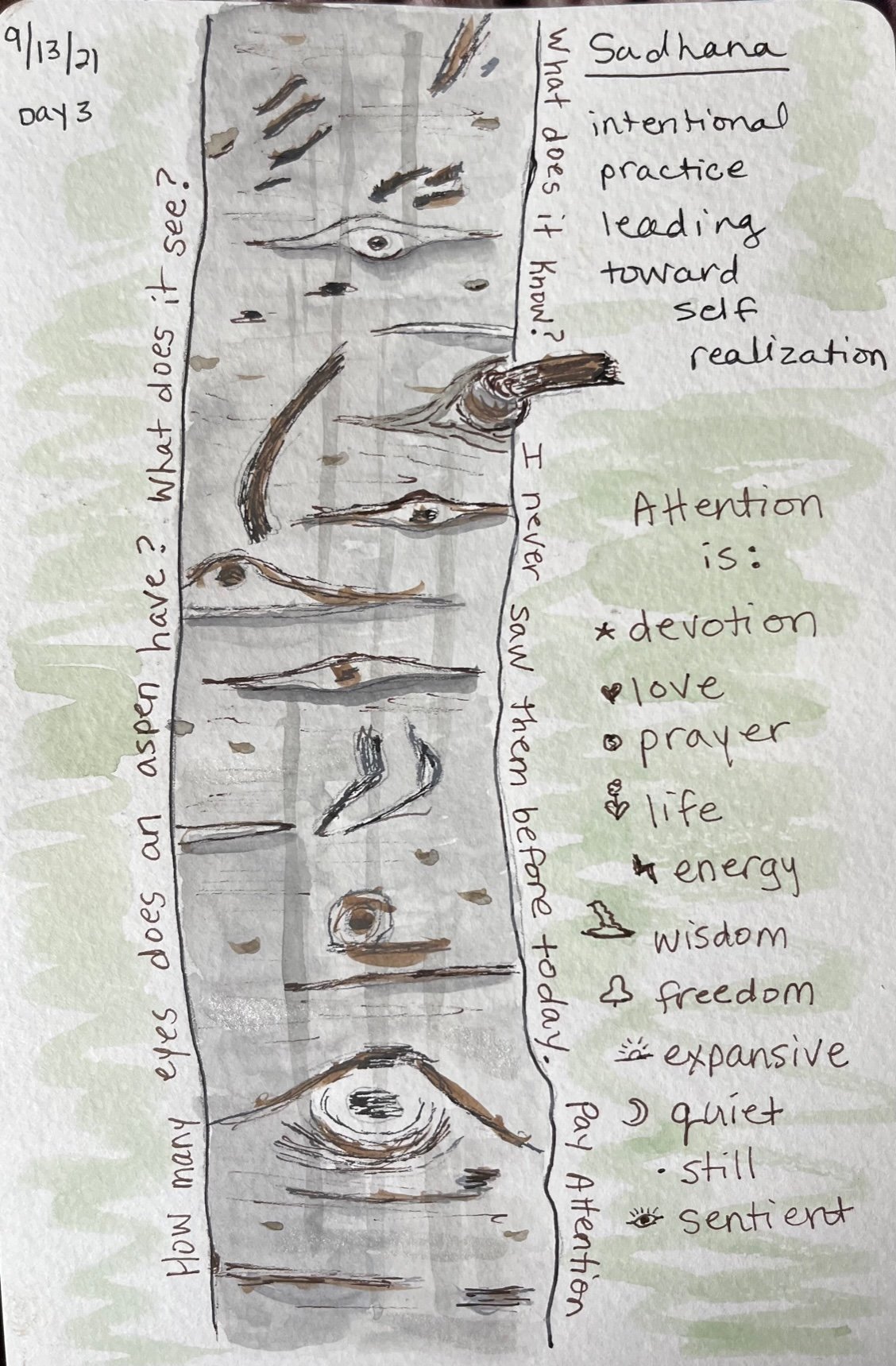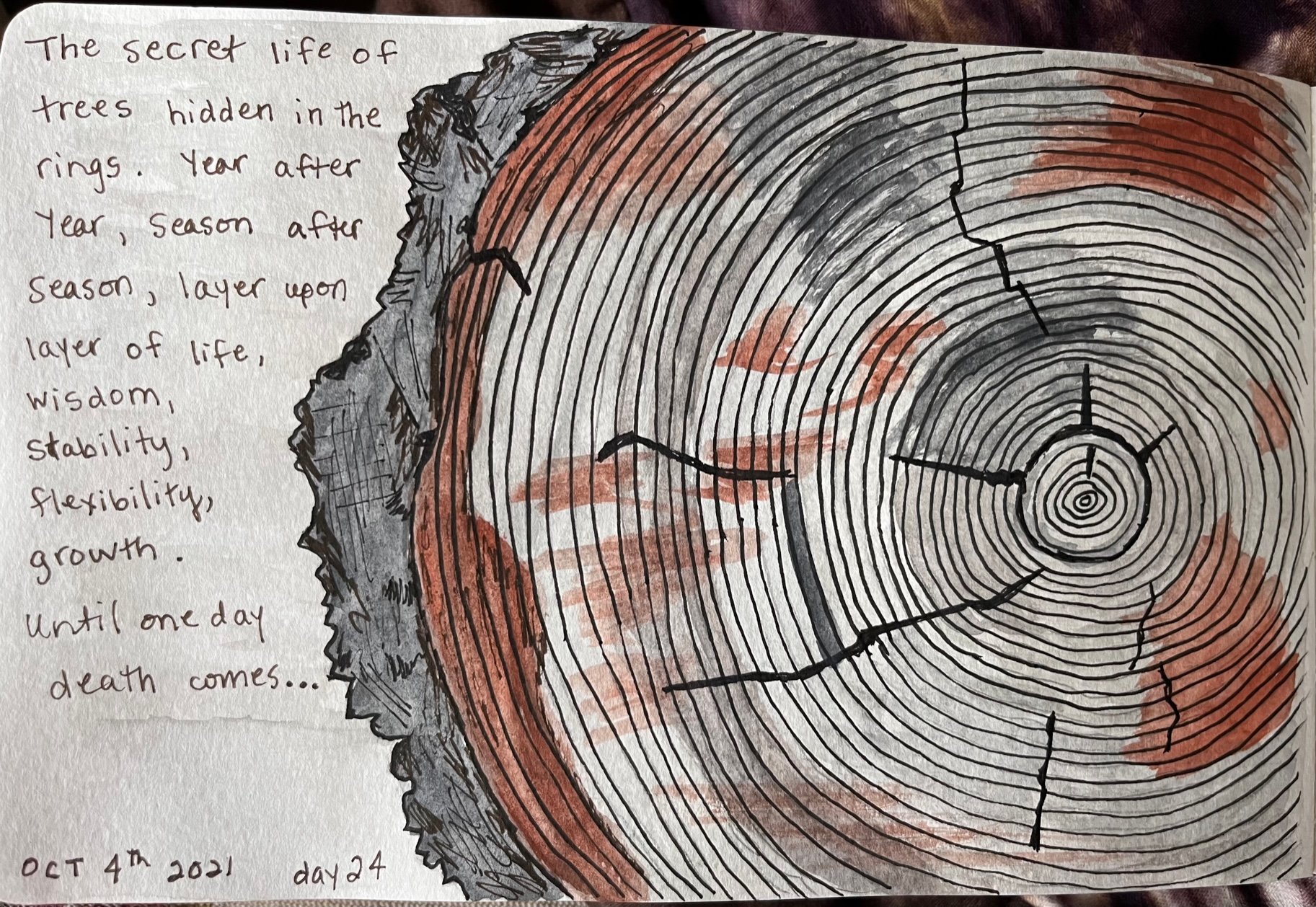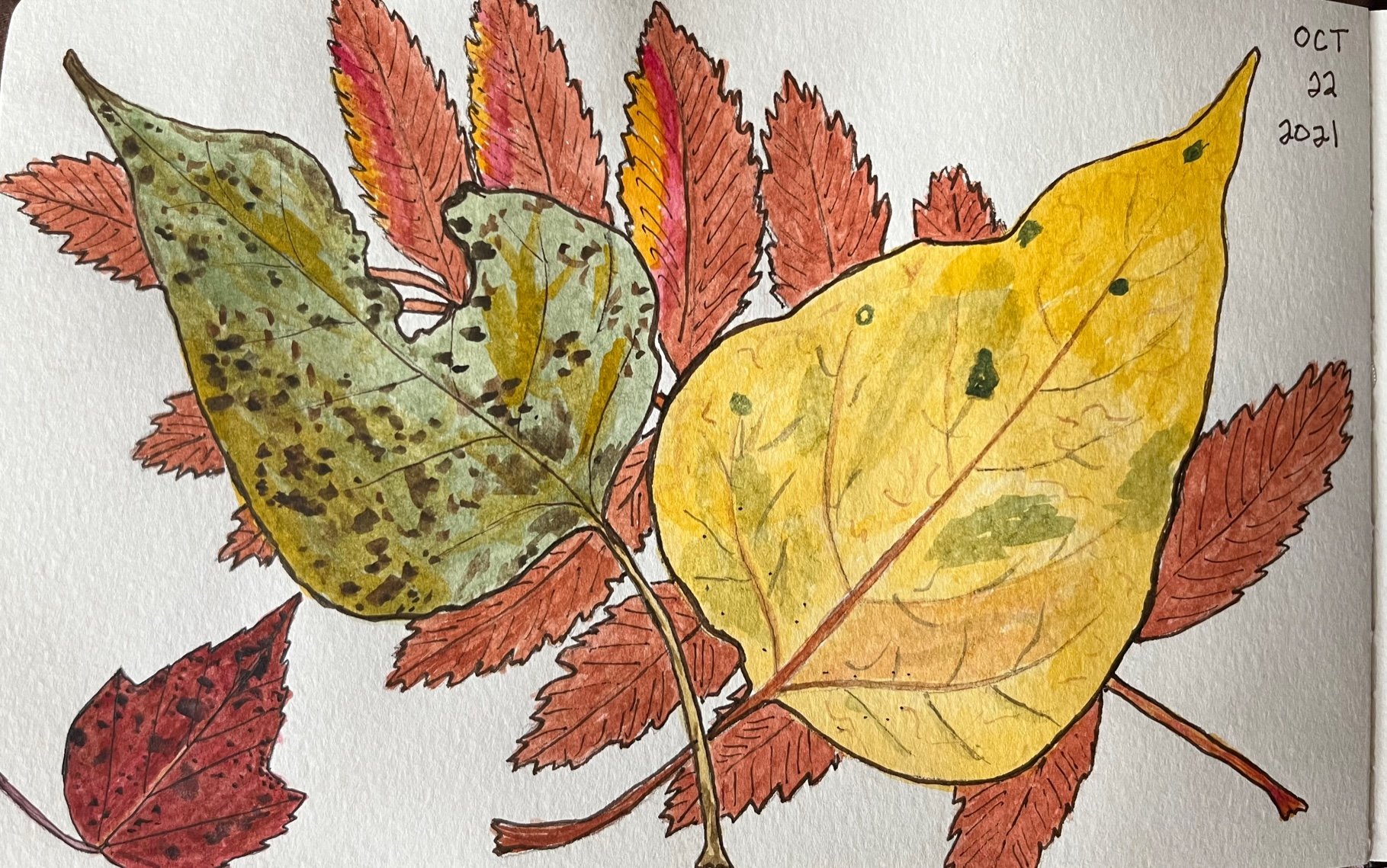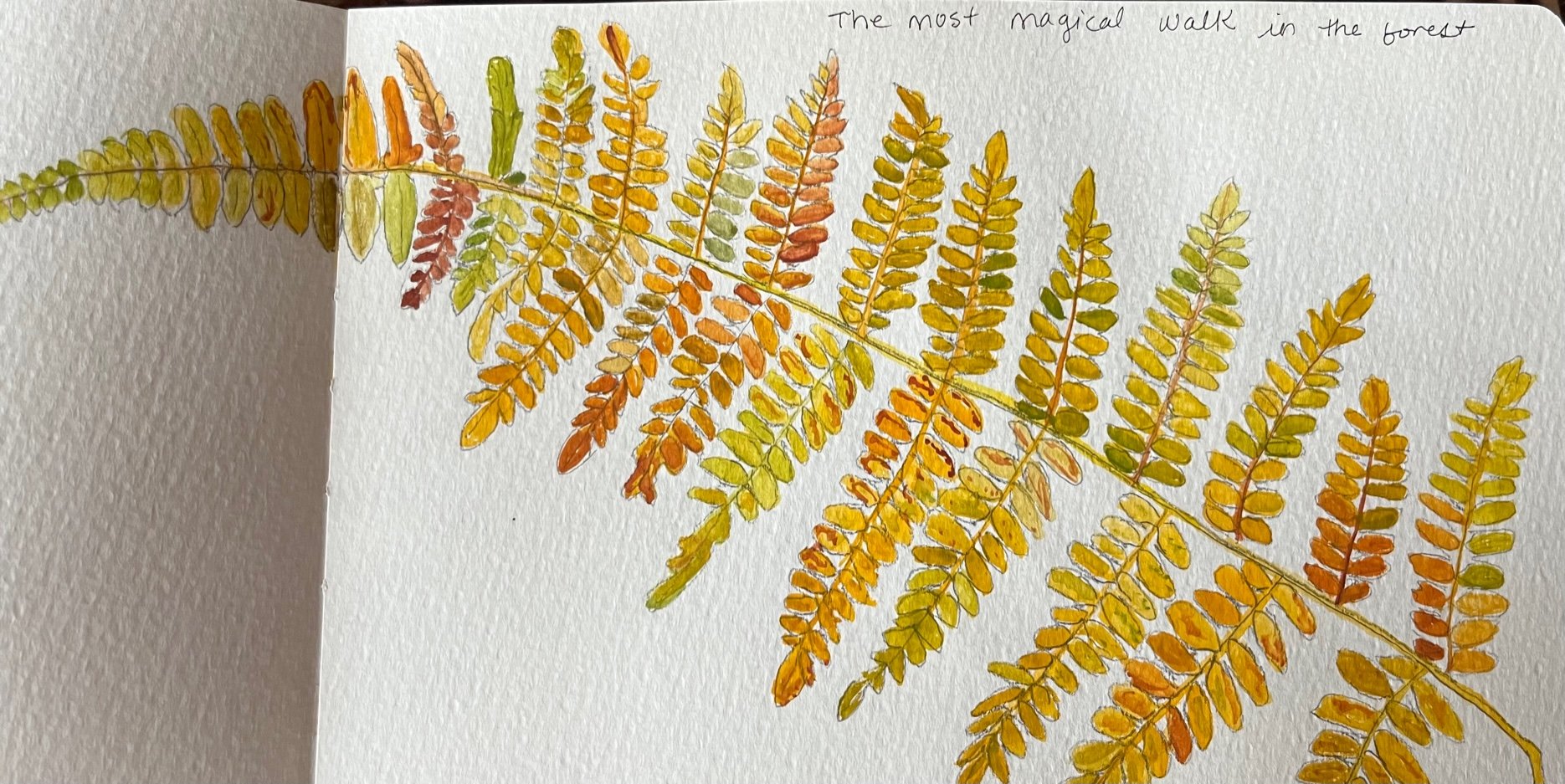Attention as a form of Love
It’s a wonderful thing when you finally turn towards something that has been calling to you for a long time. It was like this for me with meditation and yoga. This year, nature journaling has been added to this group of practices.
I started it before I knew what it was called. This spring I began dabbling in nature journaling, something I have long wanted to introduce into my life, but it had been on a back burner… way back. I have not done any kind of painting or art class of any kind since kindergarten, but finally, one day this spring, armed with a travel sized set of water colors and a journal, I went out to the creek to try to paint what I saw. It turns out that this is hard, or at least it was for me. It required all my attention, patience and concentration to even begin to render on paper the natural objects I was looking at. I expected this, of course, because I am not an artist. What I didn’t expect was the total quieting of the discursive mind and the swell of peace and joy that arose each time I went out to paint. In fact, I was getting so much joy from this practice that I decided to make a commitment to do it every day for a period of time, something like a month seemed right. Shortly after making that decision, I learned what this is called.
Sadhana is a daily spiritual practice usually done for 40 days in a row with the intention of increasing realization or awakening. Quieting the rambling mind is one of the essential ingredients to any practice of presence. Yoga, meditation and chanting are common Sadhana practices. Drawing, painting and being deeply present in nature was mine. Here are few of the things I experienced and learned from 40 consecutive days of nature journaling.
First you must begin.
One day I simply started. It was months after I had visited the University Book Store art department to purchase supplies. The idea had been in my mind for years as something I wanted to do “someday”. Where is the line between volition and action? For me, it was more about turning off the inhibitory messages about not being an artist and not knowing what I am doing. One day, I simply began.
Commit to the process, let go of the results.
One thing that made it possible for me to begin was my intention. Intention is the overarching purpose or inclination of the heart that informs a mindful action. My intention was to pay attention and really see the natural world, to be present, to be curious and to try something new. The end result would not be the painting. The end result would be the experience.
You have to see it to draw it.
What color is water? How do I know that leaf is three dimensional? Stop. Look again. Look more closely. See what is right in front of you!
Paying attention is a lot like falling in love.
I’ve never looked at a fern so closely. I’m not sure I knew they change color in the fall or how intricate they are. I got to know these leaves and twigs and logs. There is intimacy in seeing something so closely, so clearly. I began to feel them. I don’t think I’ve ever seen a more beautiful fall with so many unique and amazing leaves. I fell completely in love over and over again.
There is always beauty, even in death.
How many seasons have I walked right past the dead balsam root leaves decomposing on the side of the trails I frequent. I used to find them so ugly I could feel myself looking away. This year, I finally picked one up. Complex, twisted, gnarled, crusty, shriveling, curling up, brittle, spent but still giving its life force back to the earth. Beautiful. Wondrous!
Remember the negative space.
When skiing trees, don’t look at the trees. Look at the spaces between the trees. The same is true for quieting the mind in meditation. Look for the spaces between the thoughts. I have found that white water color paint does not work to create white in a place where there is already color. You have to look for the negative space first, the places where there is no thing. Paint around them.
The blemishes are the best part.
There are perfect leaves, to be sure, but I ended up loving the imperfect ones the best. Scars, scabs, holes and brown spots. Tears, wrinkles, missing parts. Infinitely interesting and charming, unique and one of a kind among billions. Aren’t we all blemished and perfectly imperfect? Why should nature be any other way? May we celebrate our own blemishes and beauty this much!
And you don’t have to stop after 40 days…









